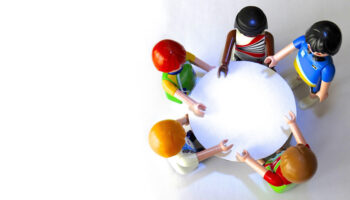The Brand Radar: Barbie, The Design Museum and the power of exhibitions

It has been widely reported how the worlds of licensing and brands are more engaged with live events these days. Live events is a catch all term for a range of activities such as exhibitions, theatre shows, interactive experiences and art trails.
Brand owners have recognised that these sorts of activations can help build a rapport with consumers, particularly fans. Also, in an ever increasingly fragmented media world, they provide a promotional anchor point to build campaigns around. A recent addition to the market is a major exhibition exploring the design evolution of Barbie. The exhibition is currently running at The Design Museum in London until February 2025.
The exhibition has generally been well received, earning plaudits from a range of reviewers. Time Out described the exhibition as “a joyful celebration of fashion, play, design and girlhood”, while The Times said it was “a riot of pink that makes you think.” However, not all reviews have been favourable… Alastair Snooke – the Chief Art Critic of the Daily Telegraph – felt that the exhibition was too “corporate”, suggesting he was being hit over the head with “a marketing mallet”. This take does highlight one of the challenges that brand owners face when developing activations like exhibitions. They will be judged through a critical lens and there is a balance to strike between creating an exhibition that draws both fans and non-fans in.
A challenge for brand owners when working with museums and galleries is maintaining creative control and keeping the brand on their message. The choice of location can play a huge part in this. The Design Museum’s take on Barbie is informed by its interest in design and the exhibition reflects that.
Another measure of the exhibition’s popularity is that The Design Museum advise booking for it in advance “to avoid disappointment”. When I visited, I had to opt for a later visit time as the exhibition was full when I arrived. If you plan to visit, it’s probably best to book.
The exhibition has opened to coincide with Barbie’s 65th anniversary and is part of a series of activations to celebrate the milestone which cut across retail, product, licensing and partnerships. The exhibition is heavily focused on design, product development and brand history. It’s presented, not unexpectedly, in an “on brand” style and as you enter the exhibition, there is no doubt you are in Barbie’s world. As The Times observed, you are greeted by a “riot of pink”. Indeed, The Design Museum have fully embraced the pinkness by adding Barbie pink to the Museum sign that greets you as you wander towards the entrance. I thought this was a nice touch and a good way of the Museum showing their commitment to the exhibition.

The exhibition is very detailed and the visual content is fully supported by well written exhibition notes that tell Barbie’s story and brand evolution. One of the opening features is a brand timeline that sets out key moments in the Barbie story. An interesting point here is how the brand often reflected what was going on in the wider world. I guess this isn’t a surprise, but it is a reminder of how toy brands have to reflect what their consumers are seeing and hearing about beyond the brand. A good example of this is that in the midst of the “space race” a Barbie astronaut doll was launched in 1965.
The timeline also picks up on key design changes and focuses on the new looks that Barbie has been given to reflect changing times, but I dare say also to reflect feedback Mattel received from retail and consumers. The timeline is a very visible reminder that a brand can’t stand still and that, design wise, there has to be a constant commitment to refreshing a brand. It’s also worth reflecting that the Barbie story is a commercial story – Barbie is a vital cog in the Mattel machine.

There is a comprehensive collection of dolls which give a great insight into the brand’s story and key design moments in that history. I am sure for fans and collectors this is a key highlight of the exhibition… For those of us who work in licensing, design and product development, this is a rare chance to see the history of a brand in one place. It’s a useful primer of what is possible in terms of themes, partnerships and brand development.
It’s also good that the exhibition doesn’t neglect the role played by Barbie’s original inventor, Ruth Handler. For the inventor community, it’s a reminder that all brands start with a good idea and in the context of inventing, this exhibition showcases what is possible.
Mattel are obviously a company with the weight of punch to maximise an opportunity, but it is worth reflecting on the fact that Barbie has played a strong game for 65 years and seen off a lot of competition. In many ways, this exhibition is a celebration of commercial success, careful brand management and progressive design. The exhibition also gives a visual insight into the fact that design change can be gradual… Often changes are minor ones, but over time these minor tweaks successfully shift the brand’s look and feel.

The exhibition has a number of interesting focal points, including a feature area that looks at the changes and developments of the Barbie logo. Refreshing logos is not unique to Barbie, but it’s interesting to see the logos together and to reflect on how things evolve. Thinking about the observations made by Alastair Snooke, it’s worth reflecting on the fact that this is an exhibition that examines a brand’s design journey, fitting well with the Design Museum’s ethos. It is not created as an art exhibition. The inclusion of details like the story of the logo’s evolution will resonate well with the design community.
I believe there are other 180 dolls in display – making this an opportunity to see the product of so much design energy in one place. There are also examples of play sets and noteworthy innovations in the Barbie product line, such as the 1967 Twist ’n’ Turn doll, which introduced a twisting waist to bring the doll more in line with ‘Swinging London’ trends. There are also features on topics such as Barbie’s hairstyles.
In addition to celebrating Ruth Handler, the exhibition is very good at name checking other designers who have played an active role in developing Barbie and contributing to the brand’s success. It’s reassuring to know that the contribution of individual designers is not forgotten when telling the story of such a strong global brand.
There are also a lot of display cabinets spread around the exhibition showcasing items like Barbie records, which give an insight into some aspects of the brand’s licensing journey and how Mattel have tapped into a range of partnerships to help sustain the IP. Of course, the exhibition follows on from the huge success of the Barbie movie and throughout the exhibition there are reminders that brands like Barbie thrive best when engaged with a range of partnerships – including game-changing moves like making movies.

The exhibition looks at topics such as the way that children play, the growing importance of social responsibility in the toy business and how Mattel have taken a more inclusive approach to the Barbie brand. The exhibition understandably focuses in the main on design and product development, but it’s good to see that other issues that impact a toy brand are discussed.
It was also good to see examples of the high-profile partnerships Mattel have brokered with fashion brands and designers, reinforcing the point made earlier that brands owners like Mattel constantly need to add fuel to the brand fire – particularly when keeping a brand on a contemporary trajectory. Again, remembering the location of the exhibition, there is also coverage about the design story behind items like Barbie playhouses and furniture.
There is an exhibition gift shop which showcases a mixture of Mattel-produced product and products bought in from licensees. It’s a reminder that Barbie has enjoyed success in the licensing market, inspiring a broad range of licensed products over the years. Curiously there wasn’t a guidebook or catalogue for the exhibition which is a shame, but the shop did sell Robin Gerber’s Barbie: Her Inspiration, History and Legacy. This is the official book marking the 65th anniversary and is a good companion piece to the exhibition. I also think it would serve as a great sourcebook for designers… Like the exhibition, it includes some great examples of brand packaging, design sketches and photography which provide valuable brand insights.

I would recommend a visit to the exhibition for anyone who works in toys, licensing or design. It provides a very useful insight into Barbie the brand’s story and provides a lot of creative inspiration. The exhibition is also a great example of how brands can be brought to life – and in turn how exhibitions are playing an increasingly important role for brand owners. Brand owners like Mattel seem to be keener than ever to engage with a broad spectrum of consumers, while also showing commercial partners that their brands can live beyond their core area.
The exhibition is also a very positive thing for the toy and design sectors – it’s a really noteworthy showcase for both industries. It is good to see a museum like The Design Museum celebrate a toy industry brand in such a prominent way.

I think the exhibition could even inspire the next generation of designers. Indeed, on my visit there were at least three school groups visiting at the same time… I reflected on what a great opportunity this was for schoolchildren to see how a single idea can inspire 65 years of success. Hopefully it would have also reassured those thinking about a career in design that design – and designers – are valued.
After all, Barbie seemed to be very content to share her billing with the designers that have helped her reach the heights she has.

























